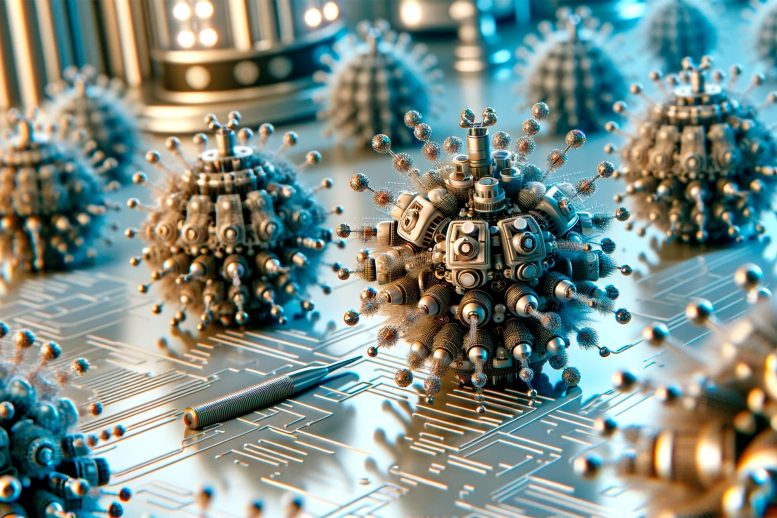
A collaborative research effort spearheaded by Nagoya University has uncovered crucial details about the FliG molecule in bacteria’s flagellar motors, offering insights for creating efficient, controllable nanomachines, potentially revolutionizing medical technology and artificial life design.
A research group has made new insights into how locomotion occurs in bacteria. The group identified the FliG molecule in the flagellar layer, the ‘motor’ of bacteria, and revealed its role in the organism. These findings suggest ways in which future engineers could build nanomachines with full control over their movements.
The researchers, who were led by Professor Emeritus Michio Homma and Professor Seiji Kojima of the Graduate School of Science at Nagoya University, in collaboration with Osaka University and Nagahama Institute of Bio-Science and Technology, published the study in iScience.
Flagellar Motors: Inspiration for Nanomachines
As nanomachines become smaller, researchers are taking inspiration from microscopic organisms for ways to make them move and operate. In particular, the flagellar motor can rotate clockwise and counterclockwise at a speed of 20,000 rpm. If scaled up, it would be comparable to a Formula One engine with an energy conversion efficiency of almost 100% and the capacity to change its rotation direction instantly at high speeds. Should engineers be able to develop a device like a flagellar motor, it would radically increase the maneuverability and efficiency of nanomachines.
Understanding Bacterial Movement
The flagellar motors in bacteria have a rotor and a stationary component that surrounds it, known as the stator. If the flagellum was a part of a car, the stator would be the engine. The rotation of the stator is transmitted to the rotor like a gear, causing the rotor to rotate. Depending on the rotation, the bacterium moves forward or backward, like an automatic car with reverse and drive settings. A protein complex called the C ring controls this motion.
Researchers clarified the physical properties of the FliG protein in the “bacterial motor”. A simulated movement of the FliG is shown. Credit: Atsushi Hijikata, Yohei Miyanoiri, Osaka University
Inside the C ring, the FliG molecule acts like the clutch, switching from forward to backward movement. Like a car, the parts must work together. The slightest change can affect the motor. In the flagellar motor, these tiny changes are mutations. Homma’s group studied the G215A mutant in FliG, which causes clockwise permanent rotation of the motor, and compared it with the non-mutated form that can move in both forward and backward directions.
The Role of FliG and Water Molecules
When they tested the G215A mutant of the marine organism Vibrio alginolyticus, they found that this clockwise motion was because of changes in FliG and the interaction of water molecules around the protein. They also saw these changes in the normal form when it rotated clockwise. However, these differed from those seen when it rotated anticlockwise.
“The flagellar motor rotates in both directions: clockwise to move backward and counterclockwise to move forward,” said Homma. “In this study, we found that the structure of FliG and the interaction of water molecules around it are different when the motor moves clockwise and counterclockwise. This difference allows bacteria to instantly switch between forward and backward movements in response to environmental changes.”
“The clarification of the physical properties of the FliG protein in motors is a significant breakthrough in our understanding of the molecular mechanism that switches the direction of rotation of motors, suggesting ways to create compact motors with higher energy conversion efficiency,” said Homma. “Using these findings, it will be possible to design artificial nanomachines that can freely control their rotation, which is expected to be applied to various future fields such as medicine and the design of artificial life.”
Reference: “Changes in the hydrophobic network of the FliGMC domain induce rotational switching of the flagellar motor” by Tatsuro Nishikino, Atsushi Hijikata, Seiji Kojima, Tsuyoshi Shirai, Masatsune Kainosho, Michio Homma and Yohei Miyanoiri, 11 July 2023, iScience.
DOI: 10.1016/j.isci.2023.107320









Be the first to comment on "From Microbes to Artificial Life: Harnessing Bacterial Motors for Nanomachines"